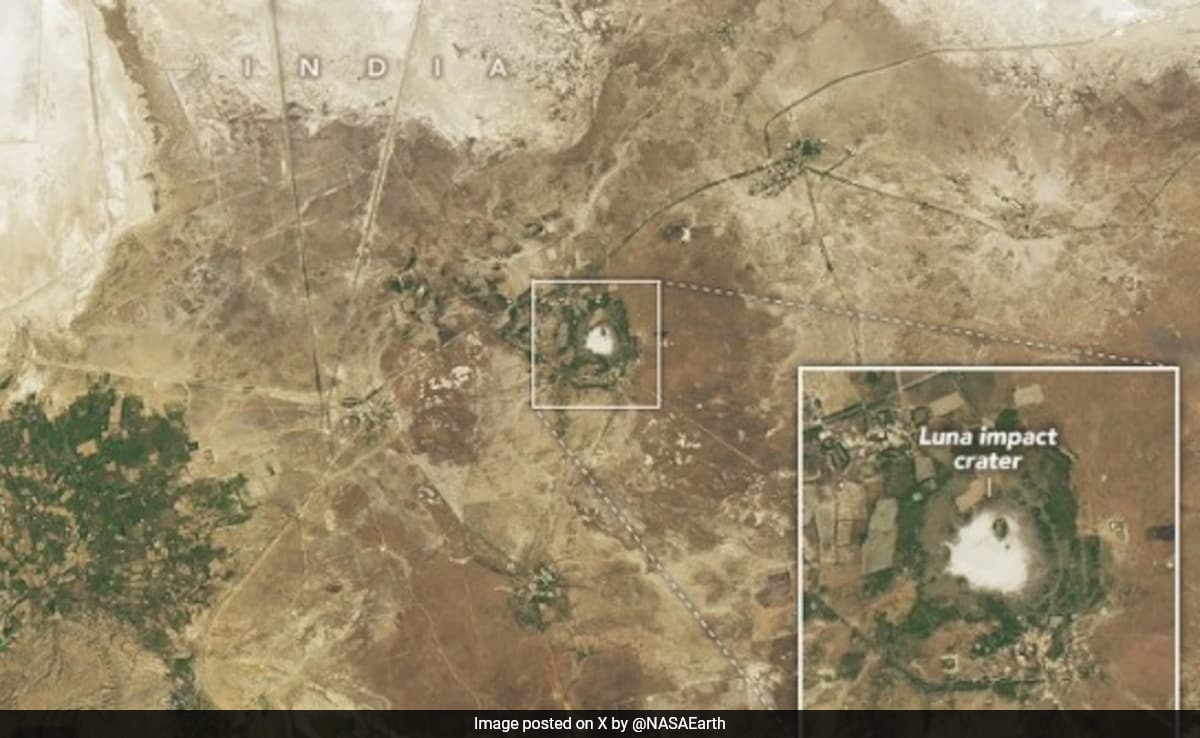2024-04-28 10:30:15

The Luna crater is near the remains of an ancient Harappan settlement
NASA Earth Observatory’s orbiting satellite has recorded a picture of a crater named Luna in Gujarat’s Kutch region. The official site of the US space agency revealed that a recent geochemical analysis found that “it contains the characteristic signatures of a meteorite impact.”
The report stated that the footprint of the Luna impact crater was captured by the OLI (Operational Land Imager) on the Landsat 8 satellite on February 24.
This development came to light after NASA shared a zoomed-in picture of the crater on X (formerly Twitter).
Sharing the image, NASA wrote, “You’ve heard of Clair de Lune, but what about Crater de Luna? The #Landsat 8 satellite captured this image of a meteorite impact site—Luna crater—located in India’s Gujarat state in the Banni Plains grassland in February 2024.”
You’ve heard of Clair de Lune, but what about crater de Luna? ????
The #Landsat 8 satellite captured this image of a meteorite impact site—Luna crater—located in India’s Gujarat state in the Banni Plains grassland in February 2024. https://t.co/EnV3LbCPsMpic.twitter.com/Z7xvSwZ4Xq
— NASA Earth (@NASAEarth) April 27, 2024
The report stated, “In the Kutch district of northwest India, a vast desert where salt is harvested in colourful rectangular ponds stretches to the Arabian Sea. Scientists in India had suspected, but not confirmed, that an object from outer space made this mark on the landscape. Now, a geochemical analysis of the structure has revealed it contains the characteristic signatures of a meteorite impact.”
The agency revealed that impact craters on Earth are relatively rare and less than 200 of them are confirmed across the globe.
NASA stated that numerous meteorites, which manage to survive their journey through Earth’s atmosphere, splash down into bodies of water.
In addition, for the ones that do touch down the land, the evidence of its impact is erased by natural forces like wind, water and tectonic plates.
About the Luna crater, NASA said, “The footprint of the newly studied Luna impact crater—named for its proximity to a village of the same name—is visible in this image, acquired by the OLI (Operational Land Imager) on the Landsat 8 satellite on February 24, 2024.”
It measures approximately 1.8 kilometres (1.1 miles) in width, and its outer rim rises about 6 meters (20 feet) above the crater floor.
NASA added, “The Luna structure is situated in India’s Gujarat state in a grassland called the Banni Plains. The Great Rann of Kutch, an expansive white salt desert, lies just to the north. Parts of these low-lying areas are submerged for much of the year, and the Luna crater often contains water. Researchers took advantage of a dry period in May 2022 to collect samples from throughout the structure.”
The space agency concluded by stating that the radiocarbon dating of plant remnants, contained in silt at the site, revealed that the impact occurred about 6,900 years ago.
The Luna crater is near the remains of an ancient Harappan settlement, but it is still uncertain if the impact predates the arrival of humans.
Luna Crater,NASA Earth Observatory,Gujar
Source link
![]()



